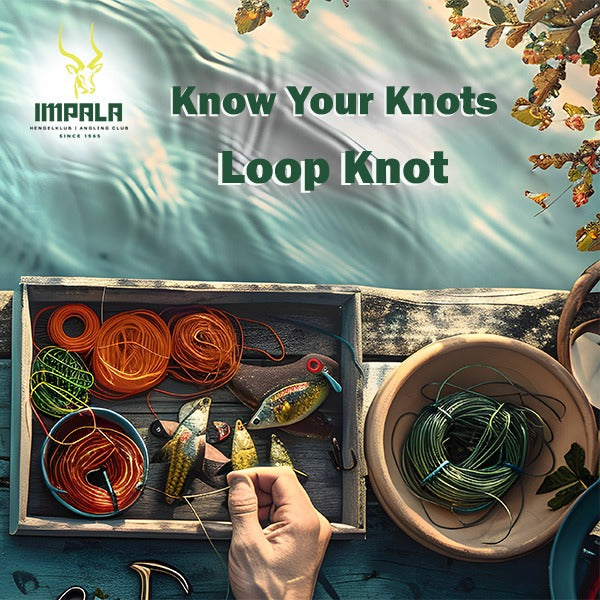Impala Angling Club in South Africa, known for its vibrant community of fishing enthusiasts and its rich repository of fishing know-how, offers a plethora of tips and techniques to enhance your fishing experience. One such invaluable skill is the ability to tie a loop knot. Loop knots are crucial for anglers as they create a fixed loop at the end of the line, allowing lures or hooks to move more freely and naturally in the water, mimicking live bait.
Impala is proud to share the first Know Your Knots in our very own How To Series: This step-by-step guide, tried and tested by the Impala Angling Club, to master the art of tying a perfect loop knot.
Step 1: Select the Right Line
First and foremost, ensure you are working with a suitable fishing line. A flexible and durable line is recommended as it needs to withstand the stress of a knot without compromising its integrity. Monofilament or fluorocarbon lines are often preferred for their ideal balance of flexibility and strength.
Step 2: Make an Overhand Knot
Begin by forming an overhand knot. Create a loop by laying the end of your line over the standing part (the main length of the line going to your rod). Pass the end through the loop just formed, but do not tighten it yet. This creates a basic overhand knot with a loop hanging loose.
Step 3: Thread the Hook or Lure
Before tightening the overhand knot, pass the loose end of the line through the eye of your hook or lure. If your aim is to attach a hook, ensure it's threaded from front to back to maintain optimal orientation.
Step 4: Wrap the Line
Holding the hook or lure, wrap the free end of the line around the standing part four to six times, moving away from the hook. These wraps are critical for the knot's strength and should be neat and tight.
Step 5: Back Through the Overhand Knot
After wrapping, thread the free end of the line back through the overhand knot. At this point, you should aim to pass it from the same direction it originally came from to ensure a tight and secure knot.
Step 6: Create the Loop
To form the loop, take the free end of the line that you've just passed back through the overhand knot and thread it through the large loop that has been sitting idle. This step is what finally creates the loop in your loop knot.
Step 7: Moisten and Tighten
Before pulling everything tight, moisten the knot with water or saliva. This reduces friction and allows the knot to tighten smoothly. Gently pull on the standing part of the line while holding the hook or lure to tighten the wraps around the shaft. Then, pull the free end to adjust the loop size according to your preference. Lastly, pull both the standing line and the hook in opposite directions to secure the knot fully.
Step 8: Trim the Excess
Use a pair of scissors or a knife to trim the excess line close to the knot, leaving a small tag end. This not only cleans up your work but also prevents any unnecessary snagging or tangling while fishing.
Tying a loop knot, as detailed by the Impala Angling Club in South Africa, is a fundamental skill that every angler should master. It not only allows your lure to move more freely, enticing more bites, but it also ensures your setup has the strength and flexibility needed to handle the demands of various fishing conditions. Practice this technique to perfect your loop knots, and remember, patience and precision are key to successful angling
Impala Angling Club has been at the forefront of angling since 1960’s The club and its members are family oriented and have the passion to grow and develop communities youth by affording them opportunities to grow the sport. Impala angling club consist of various previous and current provincial and national anglers within the club. The club is the gateway to representing a province or a country. For more information about Impala Angling Club and services, visit our website at www.impalaclub.co.za

